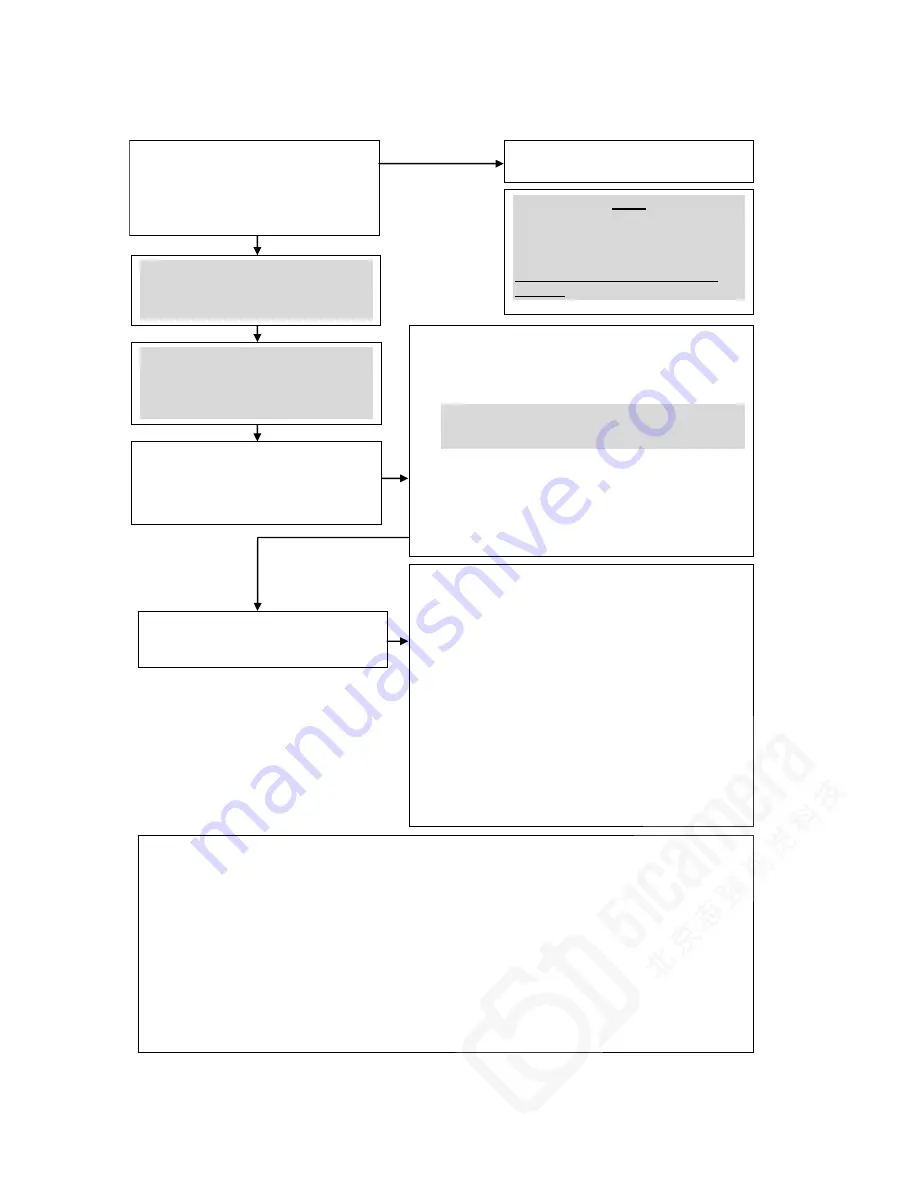
Piranha HS-S0-06K Camera User Manual
Teledyne DALSA
03-032-20213-01
29
How to Perform Flat Field Correction
1
Setup the camera operating environment (ie. Line
rate, CCD Shift Direction, exposure, offset, gain, etc)
Select the User Set (
“ssn”
1,2,3 or 4)
Digital Offset and gain. Background subtract values
should be set to zero. (
“
ssb 0
”
,
”
sab 0
”
,
”
ssg 0
”
)
2
Set the calibration sample size using the command
“
css
”
. (Optional, since the camera defaults to 4096)
3
Set the region of interest (roi) to include all of the
images pixels of importance using the command
“
roi
x1 y1 x2 y2
”
.
4
Perform FPN correction. FPN correction should be
performed before PRNU correction.
Repeat FPN correction when a temperature change greater then 10C
occurs OR when there is a significant change in integration time or gain.
1.
Stop all light from entering the camera. (Tip: cover lens with a
lens cap)
2.
Verify the output signal level is at dark by issuing the command
“gl” or “gla
(or by viewing a line profile/histogram of the
output.)
3.
Issue the command “ccf”. The camera will respond with OK> if
no errors occur. FPN correction automatically calibrates the
FPN coefficients.
4.
After the correction is complete, save the settings by issuing a
“wfc” command. (Note that Forward and Reverse direction
settings are stored separately and coefficients must be saved
before switching directions)
5
Perform PRNU correction
Perform PRNU correction next to determine the multiplication factors
(and automatic gain settings for each tap) required to bring each pixel to
the required value (balance target) for a flat white output.
1.
Place a white reference in front of the camera. (remove lens
cap if needed)
2.
Issue the command “cpa 2 i” (or “cpa 4 i” if using roi), where I
is equal to or greater than the maximum pixel value in the
image. The camera will respond with OK> if no errors occur.
3.
After the correction is complete, save the settings by issuing a
“wpc” command. (Note that Forward and Reverse direction
settings are stored separately and coefficients must be saved
before switching directions)
4.
Enable the coefficients using the command “epc 1
1”. You
should now see a flat line. (It may be necessary to average
many lines to see the residual FPN and PRNU.)
5.
Issue the command “wus” to save all User Settings.
A few notes:
A.
Repeat the above steps 3-5 for any CCD shift direction change. (ie, if the above was performed in FORWARD direction, repeat
for REVERSE direction.
B.
Always ensure what User Set (ssn 1, ssn 2, ssn 3, ssn 4) you are in when performing calibration. When the wfc, wpc and wus
commands are performed, this saves all FPN and PRNU coefficients and User settings into that set.
a.
The last User Set (ssn) used in the camera will be the same set loaded into the camera during a power cycle.
b.
You can view what User Set you are in via the GCP screen.
c.
Set 0, “ssn 0” is the factory calibration set. It ca
nnot be overwritten by the User.
C.
Remember that the cpa integer “I” is in 14 bit format. (To set an 8 bit value, multiply this by 64 to get the proper 14 bit
value.) (For example if the camera is in 8 bit mode and you want a target value of 200DN, the “I” i
nteger for CPA would be
200x64=12800. So, sending “cpa 2 12800” would give you a target value of 200DN.
)
D.
The CPA command will automatically adjust all tap gain values. The new gains will be displayed in the GCP screen. (ie. If you
selected a gain of 5, “sg
0 5” before performing the CPA 2 command, depending on the automatic gain adjustment, this value
may now be different.)
NOTE:
Items highlighted in GREY are not necessary to
perform, unless you require doing so.
Steps 1, 4 and 5 are usually only needed to be
performed.






























